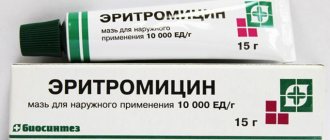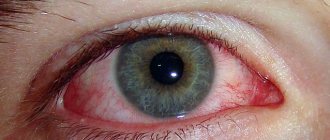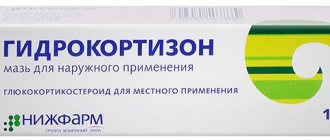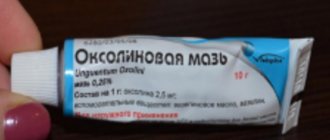What is tetracycline ointment
Eye ointment, where the active ingredient is tetracycline, belongs to the group of external antibacterial agents. Its main component has a bacteriostatic effect, that is, it has a detrimental effect on pathogenic microorganisms, preventing their reproduction.
Tetracycline in the drug affects a wide range of microorganisms, including both gram-positive and gram-negative. However, like any antibiotic, it is powerless against pathogens that are not sensitive to it.
To identify the type of infection that caused the eye disease, it is necessary to submit a sample of the discharge for analysis. This is important, because health problems can be caused by viruses and fungi, which tetracycline ointment does not affect.
Adverse reactions
The use of Tetracycline ointment is possible only after the appointment of a specialist. During the appointment, you must tell about all concomitant diseases. It is also necessary to mention previous illnesses and the development of negative reactions from other drugs or substances.
In case of individual intolerance to a pharmacological drug or non-compliance with the rules for its use, allergic reactions can develop.
In case of overdose or improper use of Tetracycline ointment, various dyspepsia, stool disorders or pain in the eyes cannot be excluded.
With severe complications during its use, changes in protein metabolism, thromboembolism, and renal dysfunction occasionally occur.
Tetracycline ointment should not be used during glucocorticosteroid therapy. This combination increases the risk of negative reactions in the body.
When can it be prescribed?
Indications for the use of the drug are such pathologies as:
- Keratoconjunctivitis is an inflammation of the eye cornea and conjunctiva, caused by bacterial infection. Signs of pathology are typical for all infectious eye lesions. These are: • burning and itching; • redness of the conjunctiva and cornea; • lacrimation; • mucopurulent discharge. The conjunctiva becomes loose, and follicles similar to grains of rice are formed on it.
- Keratitis is an inflammation of the eye cornea, in which it becomes cloudy and sometimes becomes covered with ulcers. The eye becomes red and hurts. The main cause of keratitis is considered to be bacterial infection. If the disease occurs against the background of an injury, the appearance of keratitis is explained by the fact that an infection is added to the primary inflammation of the eye caused by aggressive influence. In addition to general symptoms, with bacterial keratitis the following are observed: • increased photosensitivity; • spontaneous contraction of the orbicularis oculi muscle. Without treatment, bacterial keratitis rapidly progresses, causing severe complications.
- Blepharitis, forming a whole group of eye diseases, the peculiarity of which is inflammation of the marginal part of the eyelids, which is difficult to treat. The cause of the condition is staphylococci. Symptoms characteristic of all types of blepharitis include swelling and redness of the edges of the eyelids, as well as the appearance of crusts or scales on them. With a long course of the pathology, increased lacrimation develops.
- Blepharoconjunctivitis is an inflammation of the transparent membrane covering the surface of the eyeball and the inside of the eyelids (conjunctivitis), occurring against the background of blepharitis. Symptoms of the pathology include: • a feeling of itching and burning in the orbital area; • increased sensitivity to bright light; • sensation of a foreign body in the area of contact between the eyelids and the eyeball; • redness and swelling of the conjunctiva; • purulent discharge, which causes eyelashes to stick together and fall out; • lacrimation, especially in bright light; • decreased visual acuity.
- Meibomitis is an inflammation caused by an infectious lesion of the meibomian glands of the cartilage of the eyelid, often occurring against the background of an increased amount of secretion secreted by them. The disease is also called internal stye. It manifests itself: • redness and swelling of the eyelid (one or both); • pain and feeling of a foreign object in the eye; • formation of a focus of suppuration in the form of swelling on the eyelid; • leakage of pus during spontaneous opening of an abscess. When the acute process is not resolved by autopsy, the disease becomes chronic.
- Trachoma is an inflammation of the connective membrane of the organ of vision, quickly progressing from acute to chronic form. Often occurs due to exposure to chlamydia. Symptoms of the acute phase resemble conjunctivitis. When a secondary infection occurs, the clinical picture is complemented by: • ulcers on the cornea; • inflammation of the iris; • formation of purulent foci in the lower part of the anterior chamber of the eye; • other complications.
Without treatment, there is a risk of scarring of the conjunctiva and complete loss of vision.
The problem of treating these pathologies is effectively solved by the use of tetracycline eye ointment, which is prescribed as part of complex therapy.
Effect of the ointment
Tetracycline eye ointment 1% is prescribed to eliminate bacteria of staphylococcus, streptococcus, salmonella, E. coli, as well as chlamydia, clostridia and rickettsia.
The drug not only has an antibacterial effect, but is also a good antiseptic, that is, it promotes rapid healing of wounds (with barley, purulent chalazions, millet, etc.).
The main action of tetracycline ophthalmic ointment:
- destruction of harmful bacteria;
- blocking their reproduction and division.
Prescribed for the treatment of eye diseases and lesions:
- all types of conjunctivitis (bacterial, allergic);
- various keratitis (fungal keratomycosis, traumatic damage to the cornea, erosion, vitamin deficiency keratitis, etc.);
- meibomitis (inflammation of the meibomian glands, impaired lacrimal secretion);
- inflammation of the eyelids (simple, scaly blepharitis, ulcerative lesions on the eyelids);
- trachoma (mixed and follicular lesions of the cornea and conjunctiva caused by chlamydia);
- abscesses of the eyelids due to styes, hailstones and other purulent foci of inflammation of the eyelids;
- mechanical injuries of the eyelid and eye, postoperative period (as a preventive measure).
Be careful! Tetracycline ointment 3% concentration is not used to treat eye infections. The product is used to treat skin diseases (eczema, acne, trophic ulcers, boils, follicles, etc.).
Who can it be assigned to?
The drug is suitable for the treatment of children and adults. In addition, it is successfully used in veterinary medicine.
For adults
The ointment is not prohibited even for elderly people and those who have concomitant pathologies.
Regarding use during pregnancy and breastfeeding, there is an opinion that antibacterial eye ointments are harmful during these periods, which is not entirely correct, since:
- there is no data provided that convincingly proves the harm from the external use of such drugs on the body of the mother and fetus (child);
- the ointment acts directly on the area of application without entering the bloodstream, which means it has no effect on the body as a whole.
Tetracycline eye ointment is prescribed to pregnant women and nursing mothers. Doctors consider this justified if the hypothetical harm from using the medicine is less than the risk of complications in the absence of treatment. It is important to remember that antibacterial compounds should be used during pregnancy and breastfeeding only after consultation with a gynecologist (pediatrician).
For children
The medicine is not recommended for the treatment of children under eight years of age. However, as in the case of pregnant women, the practice of use is when the expected result from treatment outweighs the possible risks. Moreover, there are no statistics on the negative impact of 1% tetracycline eye ointment on the body of young children. Of course, this does not apply to cases where the drug cannot be used due to contraindications due to health conditions.
Animals
In veterinary medicine, it is used to treat infectious eye diseases in cats, dogs and other mammalian pets. It is applied with a special glass rod, slightly moving the lower eyelid of the animal. The assistance of a second person may be required to keep the “patient” still during the procedure.
It is important that the medicine remains on the affected eye for as long as possible. To prevent the pet from licking the ointment and wiping it off with its paw, a hard funnel-shaped collar is temporarily put on it or a bandage is applied to the affected eye.
The drug does not cause side effects or complications in animals when used according to indications, in compliance with the dosage and treatment regimen.
Problems may arise if:
- in addition to the described remedy, other eye ointments are used at the same time;
- the animal has intolerance to tetracycline drugs.
The owner should monitor the pet's condition. When two-day treatment does not produce visible results, it is worth contacting your veterinarian for advice on changing the medication.
Instructions for use
General instructions for use are here.
Before applying the medicine, you should carefully clean the sore eye from pus and crusts, moving from the outer corner to the inner one. This can be done with a clean gauze swab, after dipping it in saline solution. The following is also suitable as a disinfectant composition:
- fresh and strong, but cooled tea leaves;
- a strained infusion of chamomile or other medicinal plant that has bactericidal and anti-inflammatory properties.
When both eyes are infected, a separate swab should be used for each eye. Typically, treatment also includes the use of special drops, so applying ointment should always be the final procedure. The composition is applied slowly: with one hand, the lower eyelid is slightly pulled back, and with the other, the ointment is squeezed out of the tube, carefully placing its roll along the formed pocket, from the outer edge of the eyelid to the inner.
The duration of use of the product, as well as the number of daily procedures, is determined by the type of pathology.
Use of 1% tetracycline ointment for infectious inflammation of the eyes: table of timing and dosages
| Name of the disease | How many times a day should I apply the ointment? | Duration of treatment in days |
| Keratitis | 2-3 | 5-7 |
| Blepharitis and blepharoconjunctivitis | 3-4 | 5-7 |
| Trachoma | at the beginning of therapy - every 3 hours | 7-14 |
| further, with improvement, 2-3 times a day | from 30 to 60 | |
| Conjunctivitis | on the affected eye 2 times – morning and evening | 5-7 |
| on a healthy eye 1 time - at night, for prevention |
The given periods and dosages are standard for adults, but the doctor has the right to change them, taking into account the peculiarities of the course of the disease in each specific case. When treating boys and girls, the order of therapy is determined individually.
For children of conscious age, the ointment is placed under the lower eyelid, like adults. The sequence of actions can be shown and explained to the student so that he can perform the procedure himself, standing in front of the mirror.
When it comes to babies, you should take a sterile gauze napkin folded in the form of a tampon in your left hand, use it to push back the lower eyelid, squeeze a strip of ointment into the gap between the upper and lower eyelashes. The child will blink and the ointment will certainly get where it is needed. Considering that therapeutic manipulations can cause fear and protest in the baby, it is better if a second adult holds the child during the procedure.
Indications for use
Tetracycline ointment (1%) is used in the treatment of the following ophthalmic eye diseases (both bacterial and infectious):
- keratitis (inflammation of the eye cornea);
- trachoma (an infectious form of eye disease);
- inflammation of the eyelids (blepharitis);
- various forms of conjunctivitis.
The drug is quite effective in the treatment of conjunctivitis in children, because contains an antibiotic to neutralize inflammation.
An ointment containing 3% tetracycline is applied externally to children and is effective in treating:
- acne;
- streptoderma;
- burns;
- eczema (viral form);
- boils;
- inflammation of the edges of the eyelids;
- stephaloderma.
It is also good to put the drug into the nose of children (from 10 years old) to treat a runny nose.
Side effects and how to deal with them
Tetracycline ointment is usually well tolerated and does not cause burning or itching. And yet the drug is not without side effects, which can be expressed:
- temporary blurred vision due to the paste-like consistency of the product. As a rule, this does not last long. During the blinking process, the ointment is distributed to the upper and lower eyelids, freeing the area of the iris and pupil;
- allergy to the drug, symptoms of which include burning in the eye area, increasing swelling and redness of the eyelids.
If painful symptoms appear, you should stop using the drug and consult an ophthalmologist as soon as possible.











